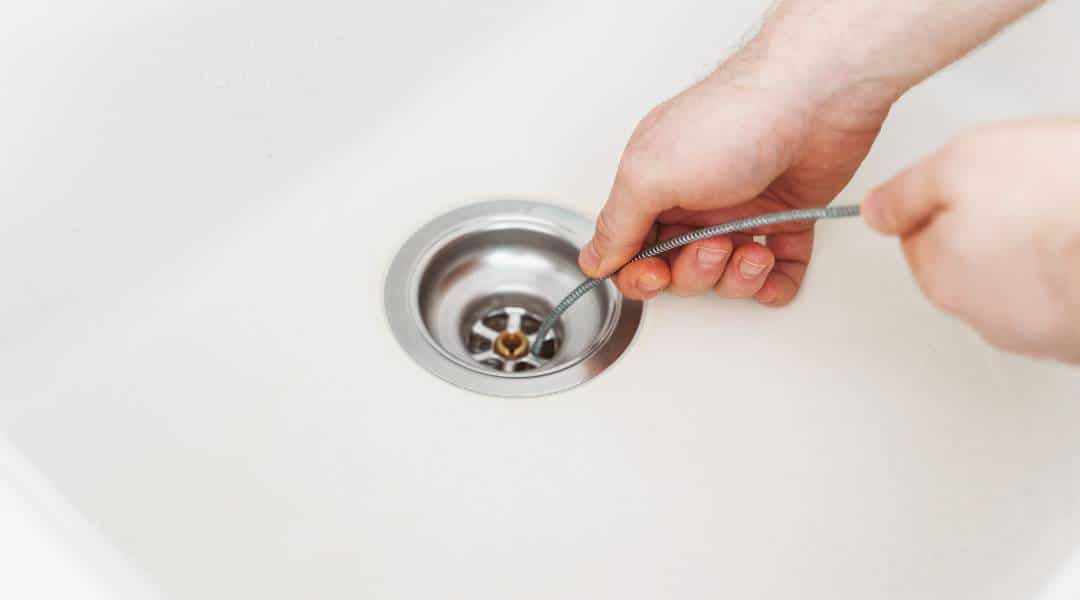Facing a clogged drain can slow down your day in Mesa, AZ. But don’t worry; you have a strong ally–the plumber’s snake. This tool goes deeper than plungers to tackle tough blockages with ease.
Its design includes a drain auger to grab and pull out clogs, supported by a long cable that navigates your pipes’ bends and twists neatly stored in its drum for simple use. Knowing when and how to use this device keeps water flowing smoothly at home. Keep this guide handy for those moments when you face stubborn plumbing challenges.
Understanding Clogged Drains in Mesa, AZ
In tackling tough clogs, a drain snake stands out. It goes beyond what plungers do. Plungers might clear minor blockages near the surface, but for deeper issues within your pipes, you need something stronger.
Enter the plumber’s snake with its crucial parts: a drain Agger and Metal Cable to navigate pipe twists, plus a Drum to manage it all by hand or crank handle. Understanding each part helps clear that stubborn clogged drain in Mesa, AZ. This knowledge of how these tools function together underpins getting water flowing right again at home.
Selecting the Right Drain Snake
When choosing the right drain snake, first look at your problem. For tough clogs that a plunger can’t fix, use it. It works well for hair, soap bits and grease in pipes.
If something like a ring falls down the sink, this tool helps, too. A plumbing snake could be what you need. To start, get rubber gloves and a bucket ready with your plumbing snake.
Make sure its cable is long enough to reach deep blockages. Now carefully push it into the pipe until you feel resistance; likely a clog. Slowly turn the handle or switch on if it’s motor-driven – this breaks up whatever’s blocking things without harming pipes.
Pull out slowly afterward, catching any mess in your bucket. Clean off debris from around and test by letting water run through – smooth flow means success! Always wear gloves for safety against germs when using one of these tools.
And remember not to force anything as that might crack or harm basic home fittings worse than before! If unsure or faced with stubborn issues after trying yourself, don’t hesitate to ask help from experts who deal more often with daily nuisances such as those mentioned above- avoiding potential larger repeat problems later on!
Step-by-Step Guide to Snaking
First, ensure you wear glasses and gloves for safety. If a liquid drain cleaner is in the pipe, flush it with water before using the snake to avoid harm when it splashes back. Start by taking out parts of your sink or tub that block access: under sinks, remove the P-trap; for bathtubs, reach through the overflow.
Slowly feed the cable from its drum into your drain until it hits a clog. Locking this drum lets you twist and fix onto what’s blocking flow so you can pull stuff out after snaking – things not too big or hard, like rings, won’t come up, nor will solid masses break down. Next, clean off the mess from your tool’s end outside of the pipes to keep everything clear.
Ensure the tool dries fully post-cleanup to prevent rust and avoid pouring hazardous substances down the pipes.
Preventing Future Drain Blockages
Know what causes drain blockages to prevent future ones. Baby wipes and leaves often clog drains because they don’t break down easily. Tree roots can also crack pipes, allowing dirt to enter and blocking water flow.
A trick you must try is pouring hot water mixed with detergent into the drain; it’s great at clearing grease buildup. Baking soda plus vinegar or lemon juice makes a powerful mix that breaks up clumps inside your pipes, too – just let it sit before flushing out with more hot water. If using salt, remember it works best on kitchen sinks by cutting through fat and grease so your drains stay clean longer.



